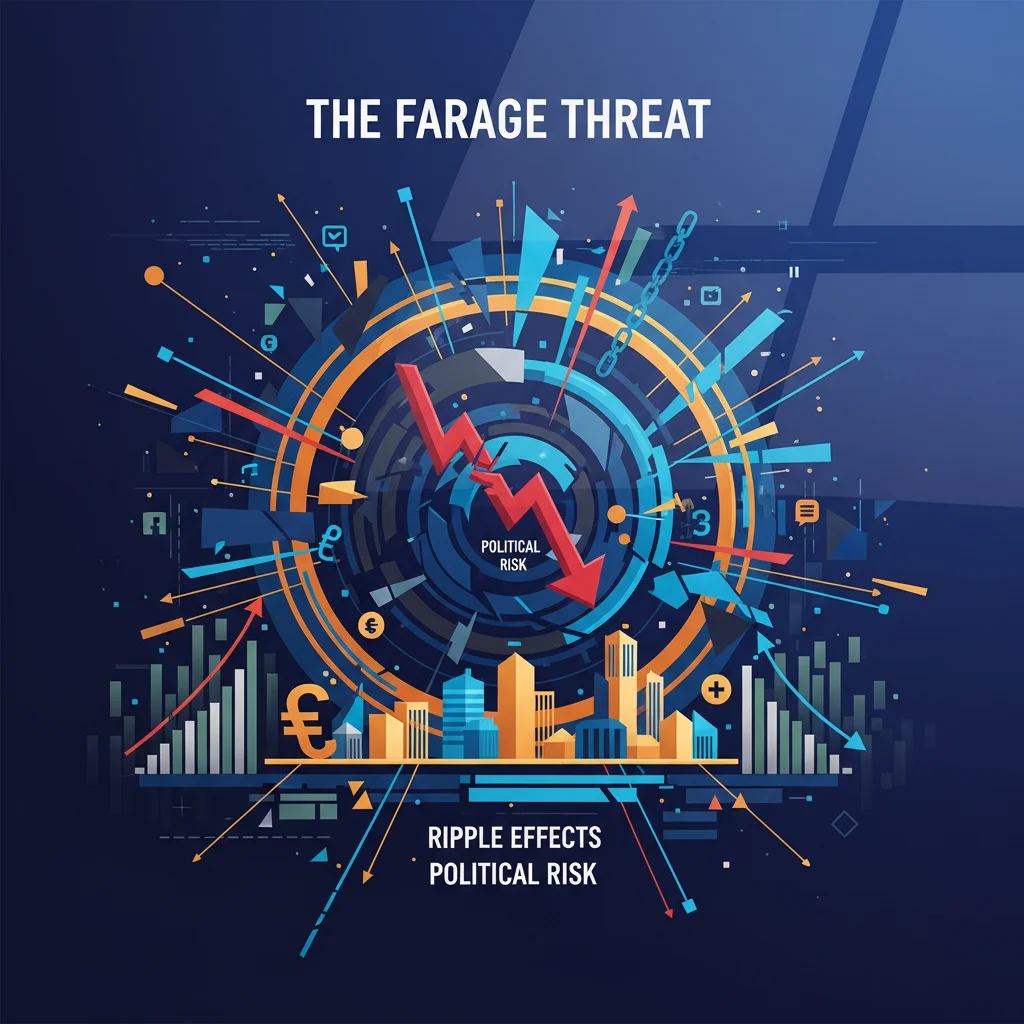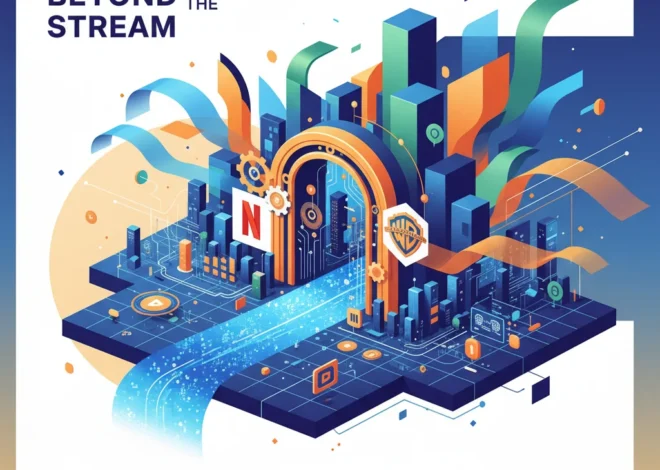
The Farage Threat: A Case Study in Political Risk and Its Ripple Effect on the Economy
In a world increasingly defined by digital discourse and political polarization, the lines between online rhetoric and real-world consequences are becoming dangerously blurred. A recent court case in the UK serves as a stark illustration of this trend, offering a critical lesson for investors, business leaders, and financial professionals. An Afghan national, Fayaz Khan, was sentenced to five years in prison for posting a video on TikTok in which he threatened to kill Nigel Farage, the leader of the Reform UK party. While on the surface this is a criminal justice story, its undercurrents reveal a much deeper narrative about political risk, market sentiment, and the evolving challenges facing the global economy.
For those in the world of finance and investing, events like these can no longer be dismissed as isolated incidents of political extremism. They are data points in a larger, more complex risk matrix—one where social media volatility can translate directly into stock market volatility. This incident is a microcosm of the new landscape where political personalities, social media platforms, and economic stability are inextricably linked. Understanding these connections is no longer just a matter of political science; it is a fundamental requirement for sound financial strategy and risk management.
The Modern Face of Political Risk: From Geopolitics to Digital Threats
Traditionally, political risk in investing circles referred to the potential for government instability, coups, legislative changes, or international conflicts to impact investment returns. An analyst would assess a country’s stability based on its institutions, rule of law, and geopolitical standing. Today, the definition has expanded dramatically. The rise of social media has democratized the ability to create and disseminate information—and disinformation—at an unprecedented scale, introducing a new, more unpredictable variable into the equation.
The case of Fayaz Khan and Nigel Farage is a prime example. Mr. Farage has long been a polarizing figure in British and European politics, making him a lightning rod for intense emotions on both sides of the political spectrum. The threat against him, broadcast on a global platform like TikTok, acts as a barometer of underlying social tensions. For investors and corporations, these tensions represent a tangible risk. A political climate charged with such hostility can lead to:
- Increased Social Unrest: The normalization of violent rhetoric can escalate into protests, civil disobedience, or, in extreme cases, violence, disrupting business operations and supply chains.
- Damage to National Brand: A reputation for political instability can deter foreign direct investment (FDI) and tourism, impacting the broader economy.
– Policy Uncertainty: Extreme polarization can lead to legislative gridlock or abrupt, reactive policy shifts, making it difficult for businesses to plan for the long term.
The threat was not made in a vacuum. It occurred during a heated general election campaign, a period when political sensitivities are at their peak. The swift legal response, resulting in a five-year sentence, underscores the seriousness with which authorities are treating such digital-age threats. According to a report in The Guardian, the judge noted the threat was made at a time of “heightened political tension,” amplifying its potential to incite fear and unrest. This judicial perspective highlights the direct link between online speech and its potential to destabilize public order—a key concern for economic stability.
The Economic Tremors of a Polarized Society
When political discourse devolves into threats and intimidation, it creates an environment of uncertainty that acts as a tax on economic activity. Investors crave stability and predictability. A climate of intense domestic hostility undermines both, leading to tangible economic consequences. Capital is mobile and risk-averse; it will flow to environments where the rules are clear and the social fabric is strong.
The impact can be seen across several key economic indicators. A sustained period of political polarization can lead to a “risk premium” being attached to a country’s assets, meaning investors demand higher returns to compensate for the added uncertainty. This can manifest as a weaker currency, higher borrowing costs for the government and corporations, and depressed equity valuations. According to a study by the International Monetary Fund (IMF), rising political polarization is associated with lower economic growth, as it tends to reduce private investment and productivity growth.
To illustrate the contrast, consider the following conceptual comparison of economic characteristics in stable versus unstable political climates:
| Economic Factor | Politically Stable Environment | Politically Polarized Environment |
|---|---|---|
| Foreign Direct Investment (FDI) | Strong and consistent inflows | Volatile or declining inflows; capital flight risk |
| Stock Market Performance | Lower volatility, steady long-term growth | High volatility, susceptible to sentiment-driven shocks |
| Currency Stability | Relatively stable and predictable | Prone to sharp devaluations based on political events |
| Consumer & Business Confidence | High, leading to robust spending and investment | Low, leading to deferred spending and investment |
| Cost of Capital | Lower borrowing costs for government and firms | Higher “risk premium” increases borrowing costs |
While the UK remains a fundamentally strong economy, incidents like the threat against Farage contribute to a narrative of growing instability, which, if left unchecked, could begin to impact these metrics over the long term.
The Role of Fintech, Banking, and the Tech Sector’s Responsibility
This evolving risk landscape presents both challenges and opportunities for the financial sector, particularly in the realms of financial technology (fintech) and banking. Financial institutions are now investing heavily in advanced analytics and AI to monitor and quantify these new forms of social and political risk. Algorithms now scan news sources, social media, and political forums to gauge public sentiment and identify potential flashpoints before they escalate.
This represents a significant shift in risk management. A bank’s due diligence on a major infrastructure loan, for example, might now include an analysis of the local social media environment to assess the risk of project-disrupting protests. Likewise, hedge funds and high-frequency trading firms are developing models that incorporate real-time sentiment data to predict short-term market movements. This is the new frontier of fintech: using technology to decode the complex interplay between human emotion, digital communication, and asset prices.
Furthermore, this incident places a spotlight on the governance of the technology platforms themselves. TikTok, owned by China’s ByteDance, is the arena where this threat was made. For the investment community, particularly those focused on Environmental, Social, and Governance (ESG) criteria, this raises critical questions. The “S” (Social) and “G” (Governance) of ESG investing demand that companies take responsibility for their platforms’ impact on society. A failure to effectively moderate content that incites violence is not just a social issue; it’s a material business risk that can lead to regulatory fines, advertiser boycotts, and reputational damage, ultimately affecting shareholder value.
The pressure on tech giants to police their platforms is immense and growing. As a World Economic Forum report discusses, the debate over content moderation and platform responsibility is a central theme in the future of digital governance, with direct implications for the tech sector’s long-term financial health.
Conclusion: A Wake-Up Call for a New Era of Risk
The sentencing of Fayaz Khan for his threat against Nigel Farage is more than a headline; it’s a data point signaling a profound shift in the nature of risk. It demonstrates how seamlessly online vitriol can become a matter of national security and, by extension, economic stability. For the general public, it’s a reminder of the real-world weight of digital words. But for investors, financiers, and business leaders, the lesson is more strategic.
The stability of our markets and the health of our economy are now influenced by forces that don’t appear on a quarterly earnings report—the algorithms of social media, the temperature of online political debate, and the potential for digital threats to manifest in the physical world. Ignoring these factors is no longer a viable option. The successful investor and leader of tomorrow will be the one who understands that in the 21st century, managing financial risk requires a deep and nuanced understanding of the society in which that capital is deployed. The trading floor and the TikTok feed are now, for better or worse, part of the same interconnected ecosystem.


